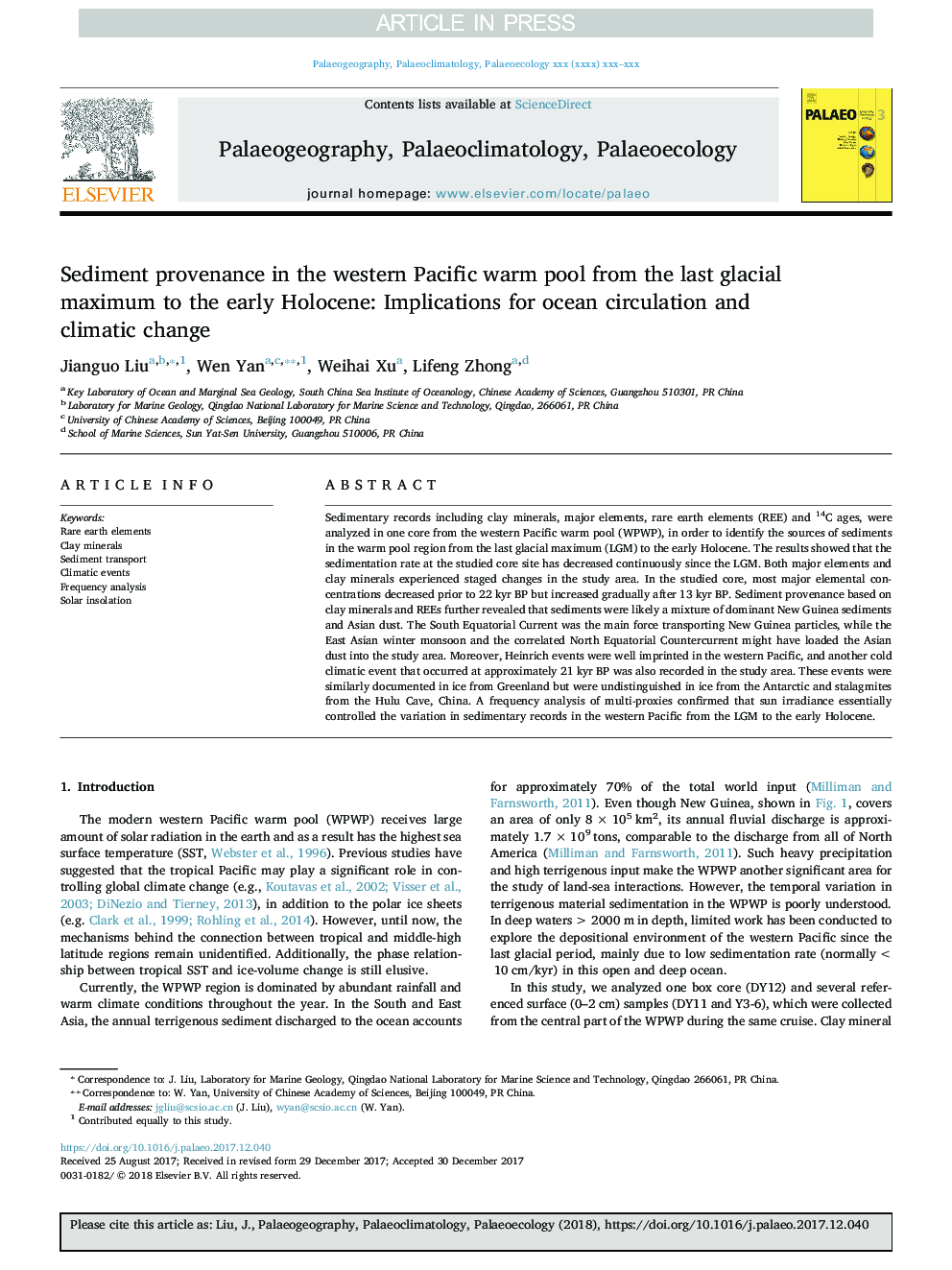| Article ID | Journal | Published Year | Pages | File Type |
|---|---|---|---|---|
| 8868377 | Palaeogeography, Palaeoclimatology, Palaeoecology | 2018 | 9 Pages |
Abstract
Sedimentary records including clay minerals, major elements, rare earth elements (REE) and 14C ages, were analyzed in one core from the western Pacific warm pool (WPWP), in order to identify the sources of sediments in the warm pool region from the last glacial maximum (LGM) to the early Holocene. The results showed that the sedimentation rate at the studied core site has decreased continuously since the LGM. Both major elements and clay minerals experienced staged changes in the study area. In the studied core, most major elemental concentrations decreased prior to 22 kyr BP but increased gradually after 13 kyr BP. Sediment provenance based on clay minerals and REEs further revealed that sediments were likely a mixture of dominant New Guinea sediments and Asian dust. The South Equatorial Current was the main force transporting New Guinea particles, while the East Asian winter monsoon and the correlated North Equatorial Countercurrent might have loaded the Asian dust into the study area. Moreover, Heinrich events were well imprinted in the western Pacific, and another cold climatic event that occurred at approximately 21 kyr BP was also recorded in the study area. These events were similarly documented in ice from Greenland but were undistinguished in ice from the Antarctic and stalagmites from the Hulu Cave, China. A frequency analysis of multi-proxies confirmed that sun irradiance essentially controlled the variation in sedimentary records in the western Pacific from the LGM to the early Holocene.
Related Topics
Physical Sciences and Engineering
Earth and Planetary Sciences
Earth-Surface Processes
Authors
Jianguo Liu, Wen Yan, Weihai Xu, Lifeng Zhong,
